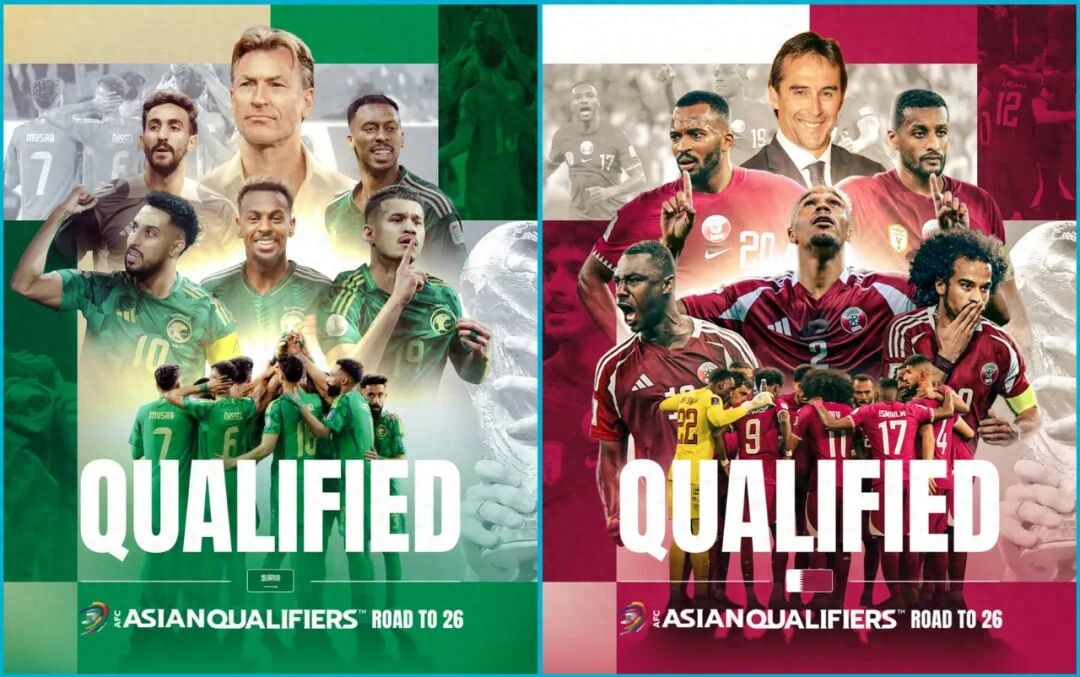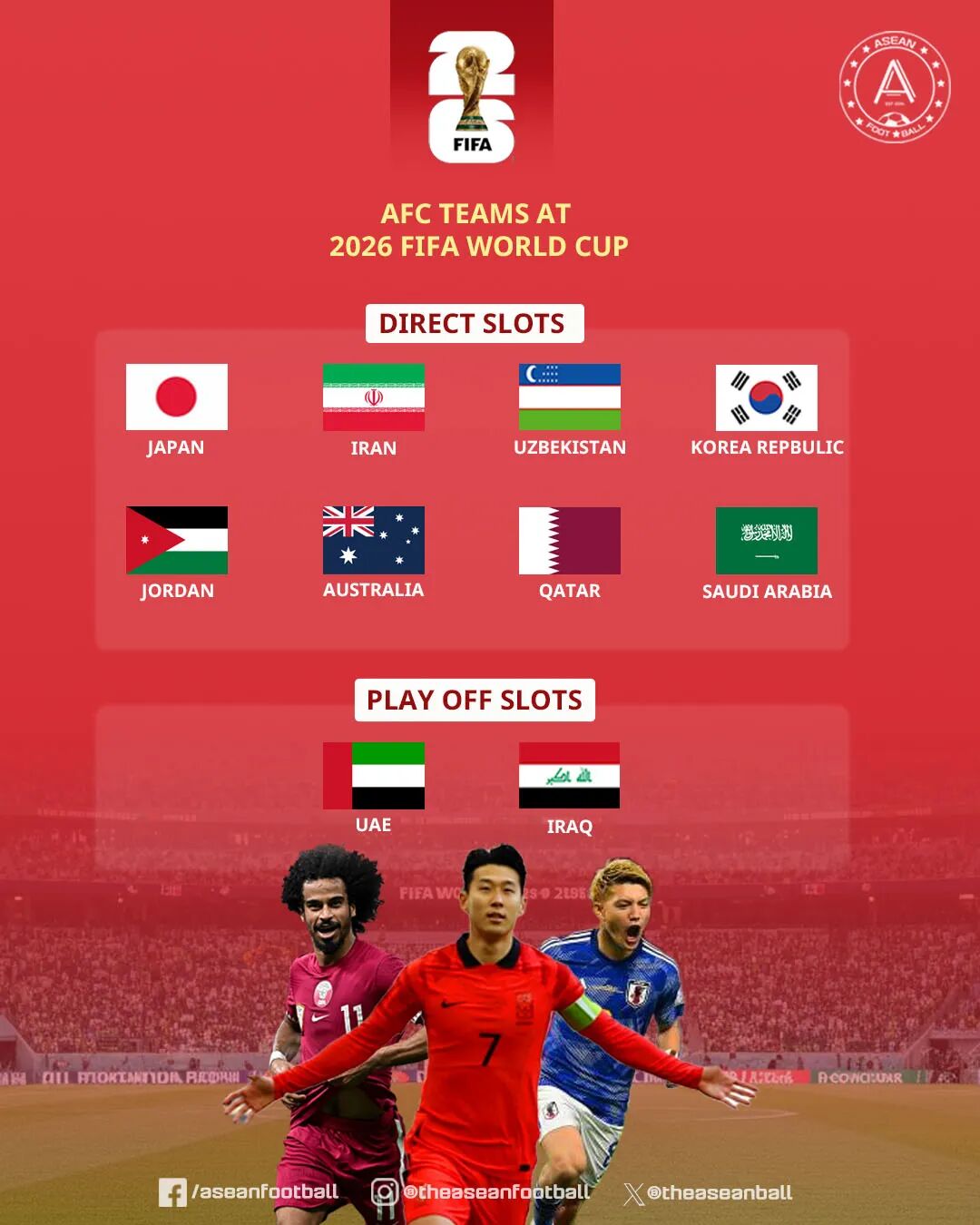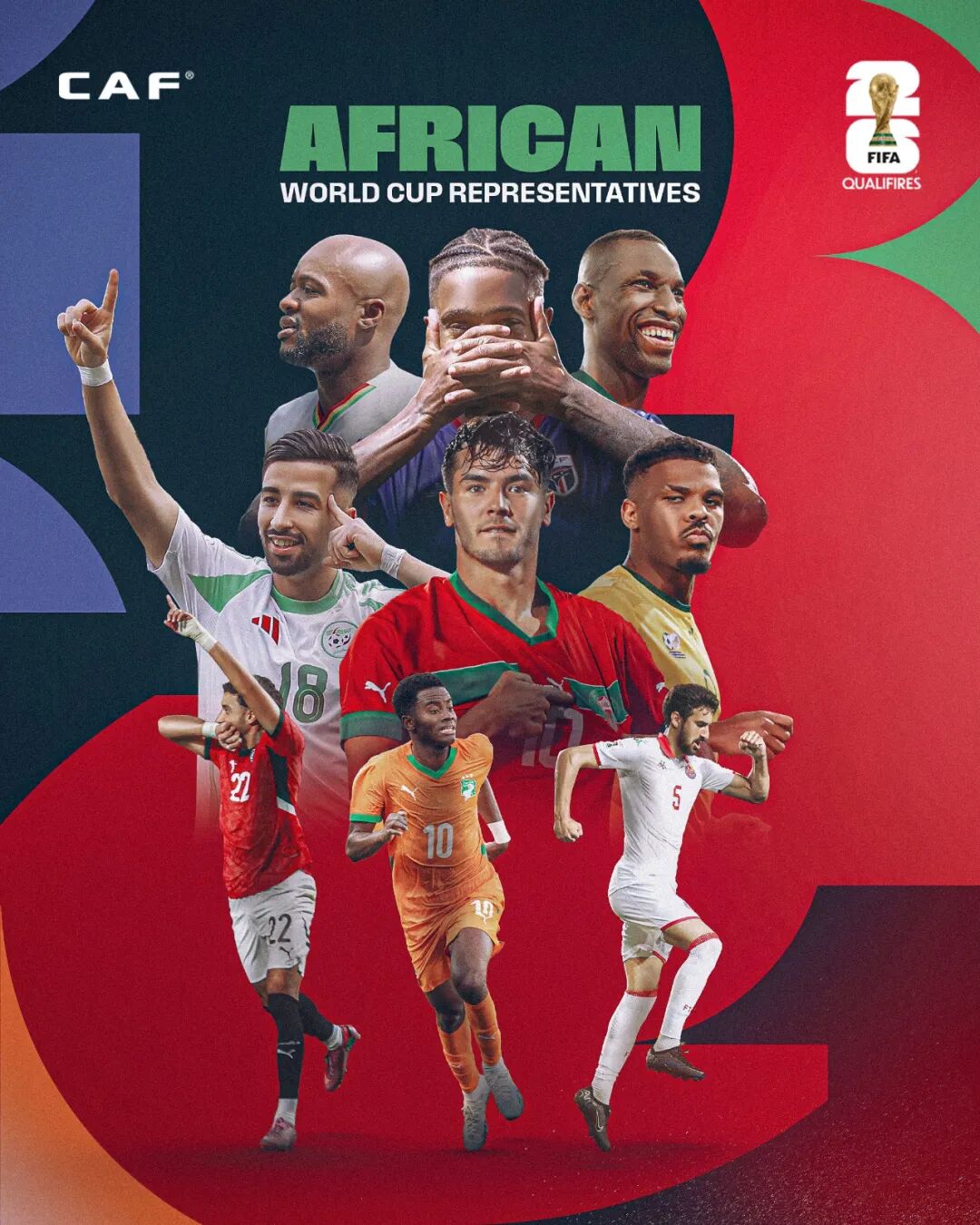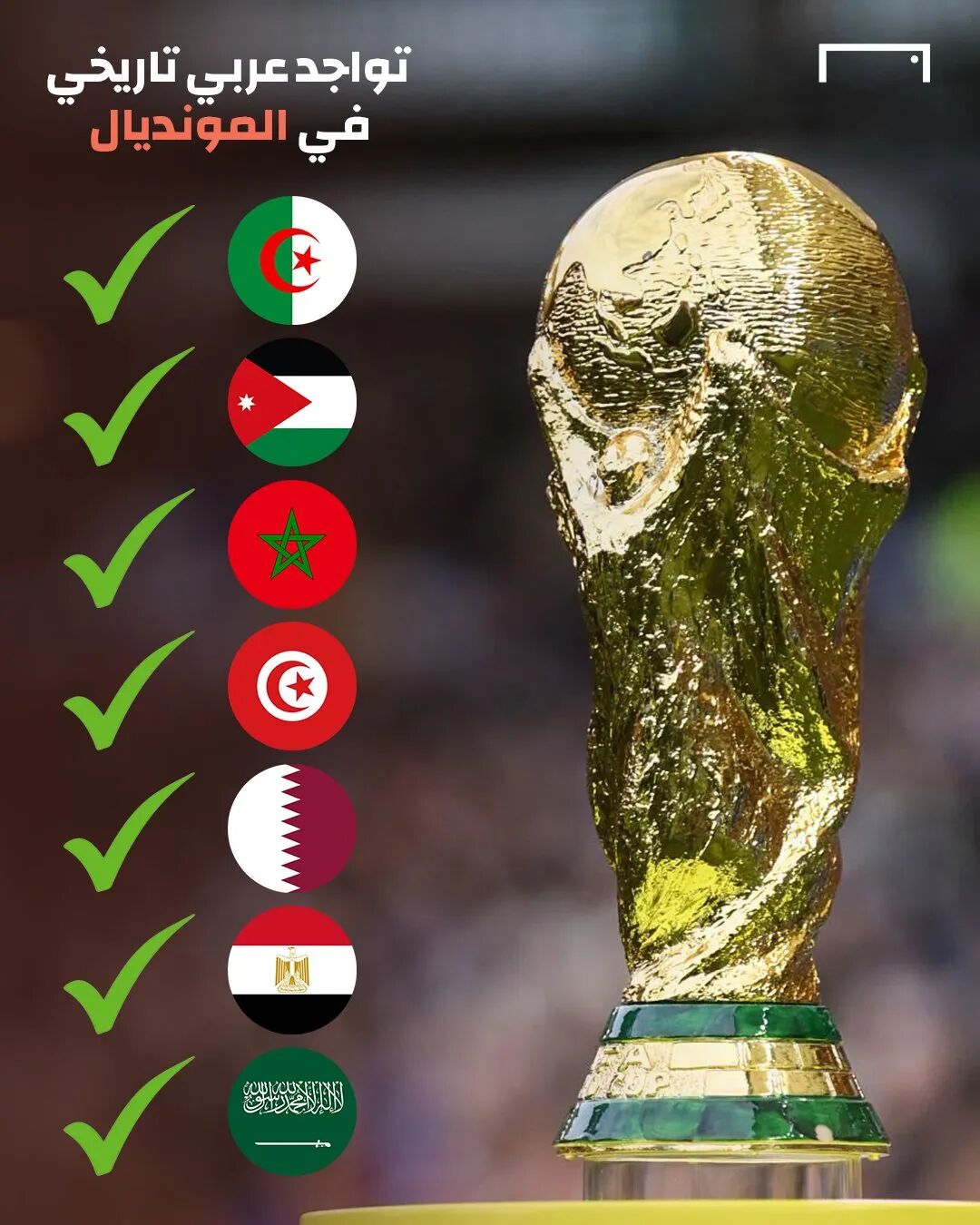The direct qualification spots for the World Cup from Asia and Africa have been finalized, with Arab teams claiming 7 places.

Written by Han Bing. On October 14, the Asian and African World Cup qualifiers wrapped up all direct qualification matches. In Asia's fourth round playoffs, Qatar and Saudi Arabia, leveraging home advantage and favorable schedules, directly advanced to the World Cup. Iraq and the UAE will vie for a single intercontinental playoff slot. In Africa, South Africa, Ivory Coast, and Senegal claimed the final three direct World Cup spots. The nine best runners-up—Gabon, Democratic Republic of Congo, Cameroon, and Nigeria—will contest one intercontinental playoff berth. Notably, the biggest highlight of this World Cup qualification cycle for Asia and Africa is the surge of Arab region teams.


The number of direct qualification spots nearly doubled, showing a stark contrast between Asia and Africa’s qualification landscapes. With Saudi Arabia and Qatar qualifying smoothly, eight of the nine teams from the top three pots in Asia’s final 18-team round qualified directly. Only Iraq (ranked 6th in Asia) and the UAE (10th) are battling for an intercontinental playoff slot. The top five Asian teams—Japan, Iran, South Korea, Australia, and Qatar—all qualified, with Qatar securing their spot via the playoffs. Before the final 18-team draw, six direct and six playoff spots were allocated; the top 11 Asian teams filled these 11 places, with Indonesia from the sixth pot being the only dark horse. However, this "international squad" of 18 naturalized players did not alter the established hierarchy of Asian football.
After the final round and playoffs, Japan (ranked 19th), Iran (21st), South Korea (22nd), and Australia (24th) remain firmly in the top tier. Qatar (52nd), having qualified through playoffs, dropped 17 places from before the final round but still leads Asia’s second tier. Uzbekistan (55th) holds the 6th spot in Asia, joined by Iraq (58th), Saudi Arabia (59th), Jordan (66th), and the UAE (67th) to form the second tier. These ten teams secured Asia’s eight direct qualification spots plus two intercontinental playoff places.
Based on the current stable structure of Asian football, the eight direct World Cup spots will most likely continue to come from the top 11 ranked Asian teams.


In contrast to Asia’s stability, African qualifiers saw traditional powerhouses Nigeria and Cameroon stumble. Although both earned playoff spots, one of these giants will miss the World Cup. Among Africa’s top nine seeds, six qualified directly. The top five—Morocco (13th), Senegal (18th), Tunisia (31st), Algeria (33rd), and Egypt (34th)—all secured direct qualification. With nine direct spots and four playoffs, the top 14 African teams claimed 12 spots, indicating a relatively stable hierarchy.
However, the easy qualification of the four North African Arab teams signals a decline of traditional sub-Saharan powers. Besides Ghana maintaining a clear advantage, Ivory Coast, Senegal, and South Africa secured their spots in the final round. Cape Verde, the biggest dark horse, pushed Cameroon into playoffs. In the last match, Nigeria needed Osimhen’s hat-trick and a stoppage-time goal to edge Burkina Faso by goal difference and reach the playoffs. Mali, ranked 8th in Africa, finished third in their group and missed out.
Since 1982, Cameroon has missed only three World Cups in eleven editions. Since 1994, Nigeria has missed only two out of eight tournaments. In November’s African playoffs, Nigeria (41st), ranked 5th in Africa, will face Cameroon (54th), ranked 9th, for the sole intercontinental playoff spot. This means that among highly valued players like Osimhen (€75 million), Lukman (€40 million), Mbemou (€55 million), and Baleba (€40 million), at least two will miss the World Cup.


Together, Asia and Africa have 17 direct qualification spots, with Arab region teams occupying 7 places—over 41.2% of the total. Outside the Arab region, Asia and Africa each have only 5 qualifiers. In the 2022 World Cup, thanks to Qatar’s host spot, Arab teams matched their historical record of four participants (2018). In contrast, in 2010 and 2014, only Algeria represented Arab teams, with 2010 marking the lowest Arab representation since the 1978 World Cup, with only 1 out of 10 qualified teams from the Arab region.
The four North African Arab teams—Morocco, Tunisia, Algeria, and Egypt—rank among Africa’s top five and all topped their groups to qualify early, demonstrating clear strength.

The real change is seen in Asia, where the new Asian Cup champions Jordan maintained their level despite a poor performance in the final 18-team round. Saudi Arabia and Qatar maximized their hosting and scheduling advantages in the fourth round playoffs to surpass fellow Arab teams Iraq and the UAE to qualify. This marks the first time at least three Asian Arab teams have qualified for the World Cup, with Iraq or the UAE still having a chance to secure a fourth Asian Arab spot via the intercontinental playoffs.
The comprehensive rise of Asian Arab teams also reflects the growing dominance of Arab nations within the AFC. With Saudi Arabia winning the bid to host the 2034 World Cup, the Arab influence in the AFC is set to remain strong for a long time.



Wonderfulshortvideo
Thomas Tuchel heard England fans tonight 😅


Job done for England and captain, Harry Kane 👏🏴


"I can't describe the feeling of playing for England” 🏴


Roy Keane on Marcus Rashford 🗣️








 Links
Links
 Contact
Contact
 App
App


